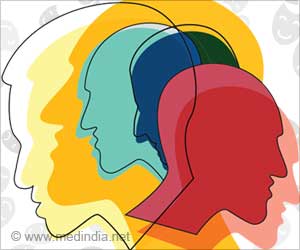The U.S. Department of Health and Human Services estimates the annual economic impact of alcohol use disorder to be $250 billion. Alcohol-related issues create more costs per capita than do all other drugs combined.
“While the addiction spotlight has turned toward the opioid epidemic, which has shown a five-fold increase in recent years, more people continue to die annually from alcohol use disorder”, said Susan Bergeson, Ph.D., a University Distinguished Professor for the Department of Cell Biology and Biochemistry at the Texas Tech University Health Sciences Center (TTUHSC) School of Medicine.
Addiction has many forms; it could be sex addiction, eating disorders, or substance use disorders, which include everything from tobacco to opioids.
Smoking kills about 8 million people a year, mostly due to cancer and other respiratory issues. Many people think that alcohol is legal and it can’t hurt anybody. It has higher morbidity and mortality than all drugs combined, except for smoking.
Earlier studies have shown that the complex mechanisms that underlie alcohol use disorder for nearly 40 years. Recently, researchers in the field discovered that neuroinflammation is a major pathway by which high alcohol consumption can lead to alcohol use disorder.
That discovery eventually led researchers to test minocycline, a tetracycline-class antibiotic commonly used to treat acne that has documented anti-inflammatory properties.
Now, researchers have designed a new medication based upon minocycline, but without antimicrobial confounds, that is currently on the path toward investigational new drug approval by the FDA.
Since alcohol use disorder is a brain syndrome, a person’s experience with alcohol or other drugs typically begins with a willingness to try it and continues with risky use and develops brain changes until they reach a point where they need it.
On an individual level, that need can be very disruptive, affecting their relationships with family and friends, reducing their social interactions, and often ruining their ability to successfully hold their job.
The alcohol we drink is ethanol, and though it can be consumed and enjoyed responsibly, it is still a poison like some other alcohols (e.g., methanol, ethylene glycol, and isopropanolyl).
In high doses, ethanol is a depressant and a person can die from an acute overdose. This happens more commonly in college where kids who may be on their own for the first time try to keep up with peers who are more experienced drinkers.
The risk for alcohol use disorder is about 50% genetics and 50% environment (e.g., poverty, stressful conditions such as abuse as a child, influence from others with high alcohol use, and even dire poverty can increase risk).
Interestingly, men have a higher probability of having alcohol use disorder, but women have more tissue damage at equivalent amounts of alcohol. Alcohol is far more damaging in females than males, even at the same blood alcohol concentration.
Research has shown that men are more likely to drink to reduce their social anxiety, while women more often do so to reduce depression.
Both of those factors can play a role in how people respond to the holidays when parties and celebrations provide opportunities for one to drink when they don’t normally, or drink more than usual.
One of the common misconceptions people have about alcohol use disorder is that a person can quit drinking “cold turkey” or through sheer willpower.
However, AUD is a lifelong disorder for which many struggles, even when they are intentional about staying sober. So while that may be possible with some other drugs or addictions, most find it much more difficult to walk away from alcohol.
For some, attending holiday events with alcohol present, being around the people with whom they used to drink or the smell of their favorite drink can be hard to resist.
Remembering this during the holidays, and being supportive of those at risk is particularly kind.
Source: Medindia



